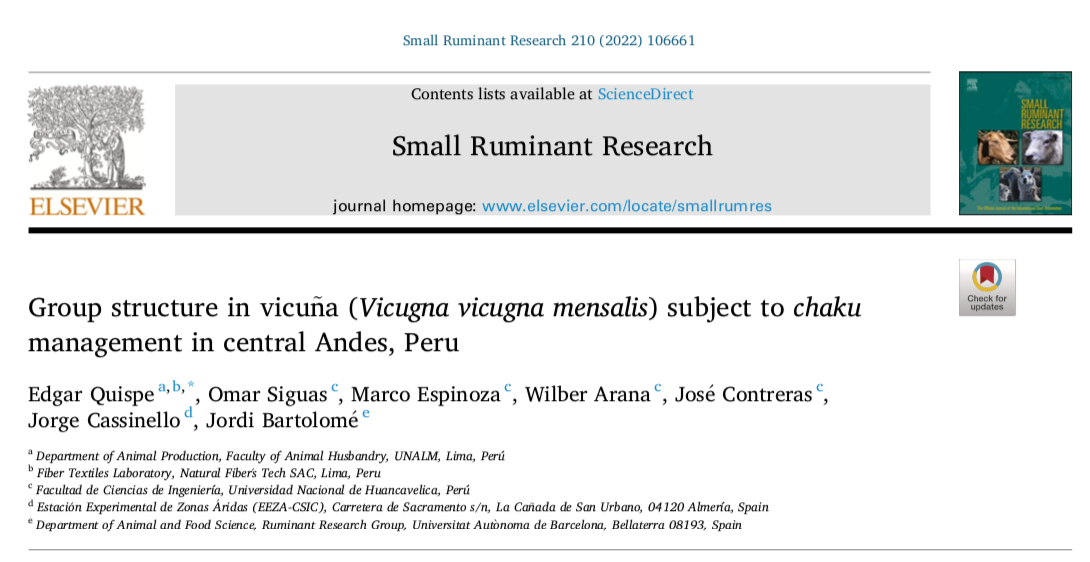
Abstract
A detailed analysis has been made of family group structure of a Peruvian vicun ̃a (Vicugna vicugna mensalis) population subject to human management to obtain their fiber through shearing (the so-called chaku procedure). Animals inhabit a fenced area of natural grassland, and without human intervention, apart from the chaku procedure, which takes place once a year. Poor management conditions could be generating several changes on the structure vicun ̃a familiar groups. Once the whole chaku procedure took place, we observed a decrease of the average size of family groups from 4.67 to 3.60 individuals and their composition suffered from a higher change rate in comparison with previous periods of observation. Territorial males did not manage to keep their original family groups, and only 27% of males maintained at least one female from their previous family group. As for the adult females, after chaku only 55% managed to join up with at least one member of their original family structure, but only 23% kept their own offspring, providing evidence that the chaku event produced disruption of the family groups and lead to a high percentage of mothers losing their offspring afterwards. These results show the acute effects that this particular chaku procedure has on vicun ̃a family group structure and composition. Finally, it is recommend urgently implementing good practices designed by the IUCN to reduce the impact of large-scale captures, including carrying out chaku procedures every two or three years, and preferably during the months of September to October, thus minimizing deleterious effects on mother-cria bonding, and where animal welfare is the main driver when making management decisions.
Keywords: Animal welfare; Fiber shearing; South American camelids; Vicuña behavior; Wildlife management
